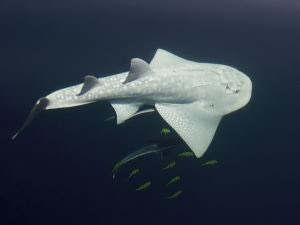Pesce Immagine Lampreda Marina
The white ones are inferior to black and slate gray-blue supermind. The larger species have marbled sides blackish slate, on a gray-white, the back is darker and larger spots and the ventral side is dirty white.
It 'a species that bears significant changes in salinity and temperature and, therefore, can be found in fresh or brackish waters, but also in the sea up to 600 meters deep. The play, once in life and in the spring early summer, takes place in freshwater. The female can have more than 200,000 eggs, small and spherical. The larvae spend 3 to 5 years in streams, hidden under stones or in crevices, then transform into the adult stage and migrate to the sea.
The larvae feed on plankton and those adults are parasites of other fish. Do not take the bait on the hooks and are rarely taken with nets. The maximum size of an adult reaching nearly a meter.
And 'present everywhere, but rare on the Italian coast.
Read More …














